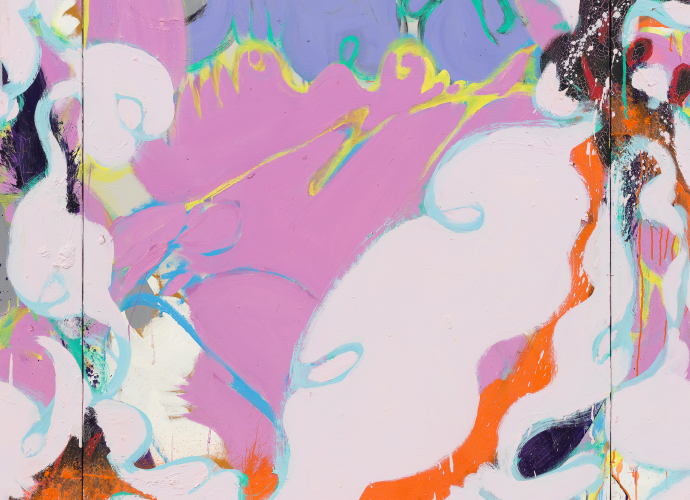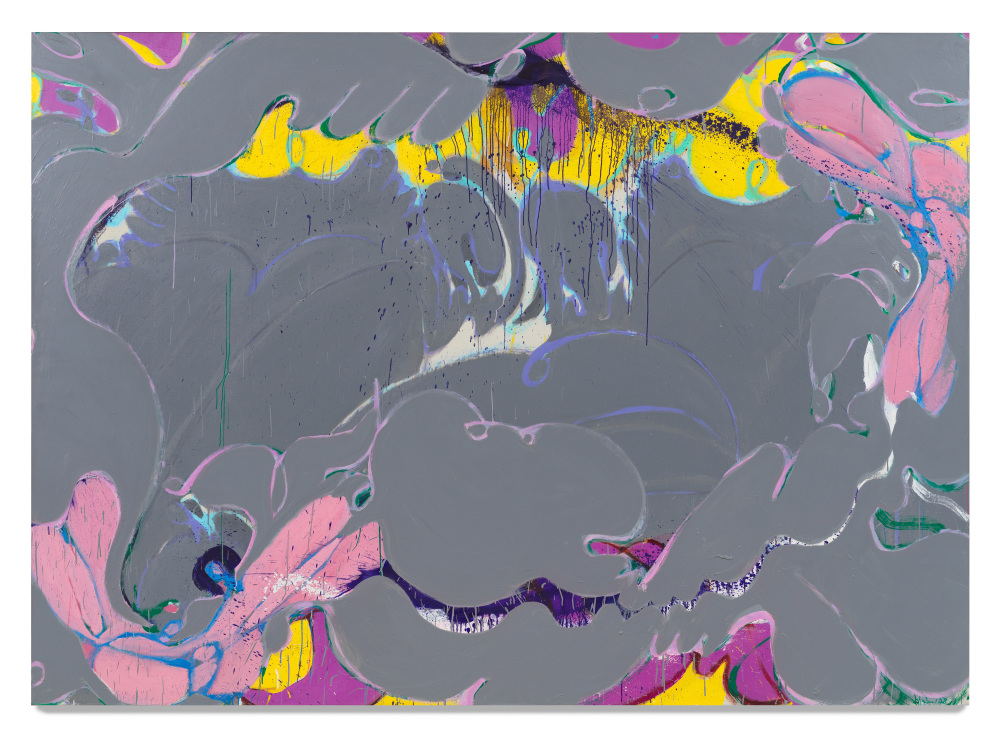
Norman Bluhm | Artforum
By Barry Schwabsky
November 2022

Sooty Lady, 1978, Oil on canvas, 76 x 106 inches
Norman Bluhm
Miles McEnery Gallery | 525 West 22nd Street
Frank O’Hara contrasted the art of Norman Bluhm (1921–1999) with that of Jasper Johns, saying, “Johns’s business is to resist desire, Bluhm unconsciously inspires it.” Perhaps the poet’s remark helped turn Bluhm’s instinctive aesthetic goal into a more deliberate project. In any case, by the end of the 1960s, Bluhm’s imagery had swerved from the gestural abstraction for which he’d become well-known to a mode of painting that, while still nonrepresentational, was nonetheless highly evocative of the body; the work’s aggressive energy had morphed into a more seductive sensuality. This, apparently, was not what the art world had ordered. Fred W. McDarrah’s photograph of Bluhm throwing paint onto a big canvas while seemingly dancing on a ladder had encapsulated a certain idea of The Artist’s World in Pictures for the cover of McDarrah’s 1961 book of that title. But by 1976, Jeff Perrone, reviewing Lawrence Alloway’s 1975 volume, Topics in American Art Since 1945, for Artforum, could illustrate the breadth of the English critic’s interests by citing his “surprising dedication to the outcast Norman Bluhm.”
An exhibition featuring half a dozen of Bluhm’s chromatically rich paintings, made between 1975 and 1978, might have caused a present-day viewer to wonder just why Bluhm became an outcast. Today, after all, we can appreciate Johns without committing ourselves to his austerity—which paved the way for Minimalism and Conceptual art—and eschew taking sides against Bluhm’s hard-won hedonism. We can admit that asceticism, at least in Johns’s case, is a form of feeling and that sensuality, for Bluhm as for his great predecessor Henri Matisse, is a form of intelligence. By the time he made these paintings, Bluhm had transmuted the direct gesture cultivated by the Abstract Expressionists into something more oblique via flowingly cursive arabesque lines defining spaces that are painted in with broad suave strokes that read as fluid surfaces, the contours carving and giving definition to smooth, mellifluous zones of color as drips and splatters create oddly delicate traceries that adorn the works’ larger forms.
While the paintings are mostly horizontal in format—sometimes extremely so, in the case of the twenty-foot-long but only four-foot-high quadriptych Untitled, Studies in Blue, White, Gray, 1975—the consistent feeling in them is of a slow and circuitous but irresistible ascension on a sort of gently billowing whirlwind, an upsweep Tintoretto (whose work Bluhm studied extensively during the 1970s) or Rubens might have felt, had it been permissible to acknowledge the erotic foundations of such an image. Bluhm’s steady, curving surfaces insistently evoke the flesh, the human figure, in which, he held, “all the great form really exists.” That the flesh that obsessed him was female is attested to by some of the paintings’ titles, such as Sooty Lady and Mermaid’s Delight, both 1978. The paradox is that while the resulting imagery is “absolutely corporeal,” as Jane Livingston wrote in a 1977 catalogue essay for the artist’s work, it never resolves into closed organic shapes. And as the pneumatic forms waft ever upward, they might just as easily be mingling currents of flowing colored air or water; volume and atmosphere become indistinguishable. The viewer is immersed in eddies of pleasure. Desire—as O’Hara might have recognized, had he lived into the 1970s—became Bluhm’s program for painting.
— Barry Schwabsky